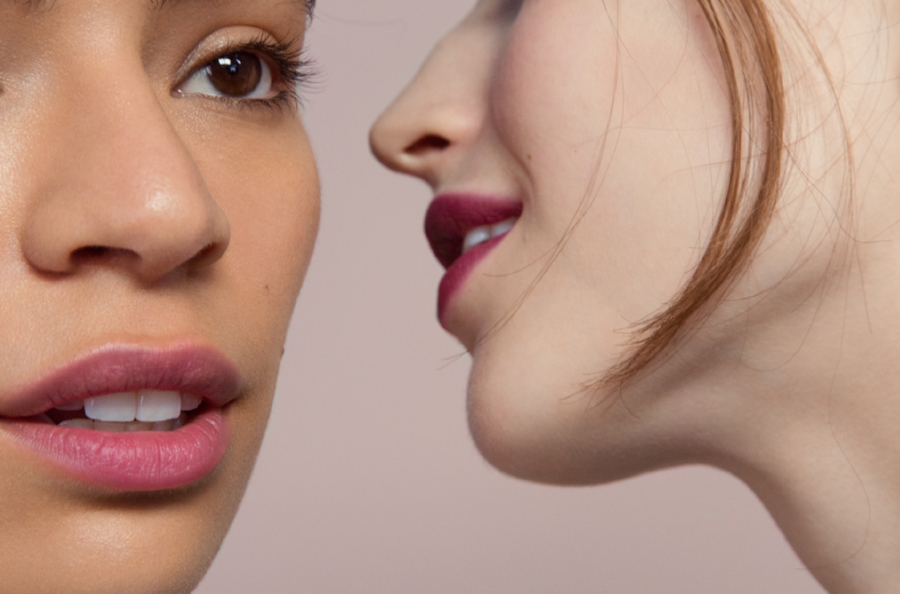
image: Glossier
You can add Glossier to the increasingly long list of brands that have been slapped with lawsuits for allegedly violating a federal civil rights statue in connection with their websites. According to a lawsuit filed in New York federal court last week, plaintiff Kathleen Sypert alleges that the Emily Weiss-owned cult beauty brand is on the hook for violating the Americans with Disabilities Act (“ADA”) by denying her and other visually impaired individuals “from having full and equal access to its website due to its failure to have screen reader software on it.”
For the uninitiated, in addition to prohibiting discrimination on the basis of race, color, sex, national origin, age and religion, the ADA guarantees equal opportunity to disabled individuals – those who have “a physical or mental impairment that limits one or more major life activities” – in connection with public accommodations, employment, transportation, state and local government services and telecommunications. The prevailing interpretation amongst courts in the U.S. is that while the ADA clearly applies to physical spaces, such as movie theaters and stores, it also applies to websites that are associated with a physical location, such as a brick-and-mortar store.
Describing herself as “a visually-impaired and legally blind person,” Sypert alleges in her suit that “due to the inaccessibility of the [Glossier] website, blind and visually-impaired customers, who need screen-readers, cannot fully and equally use or enjoy the facilities, goods, and services that [Glossier] offers to the public on its website.”
Sypert further argues that “the access barriers [she] has encountered [on Glossier’s website] have caused a denial of [her] full and equal access in the past, and now deter [her] on a regular basis from accessing the website,” despite the fact that she would like “to visit [the brand’s] website and physical locations.”
The claims against Glossier are hard one of a kind. In fact, over the past couple of years, nearly identical lawsuits have been against H&M, the Kardashians’ Dash stores, Lacoste, Jo Malone, Coach, Giorgio Armani, Gucci, Wet Seal, Versace, Vera Wang, Valentino, Urban Outfitters, Tory Burch, Bally, Hugo Boss, Louis Vuitton, Perry Ellis, New Balance, Nike, and J. Crew, among others, with many of these suits settling out of court, presumably with a monetary damages component and a pledge from the brands to recalibrate their websites to make use of the specific software that is recognized by the industry to enable access by both visually and hearing impaired individuals.
As attorney Thomas Bacon, who pioneered many of the cases against the aforementioned brands (but not the case against Glossier), told TFL, “Case law holds that websites are considered extensions of places of public accommodation because they provide access to the goods, services, facilities, accommodations, benefits and advantages of a place of public accommodation.” This means that “such websites must be accessible to the disabled, including those who are visually impaired.”
Because many of the websites at issue “were designed well after the effective date of the ADA [which is July 26, 1990] and continue to be regularly revised, upgraded and maintained, there is no excuse for failure to make websites available to the visually impaired.”
The frequency with which these lawsuits are being filed should serve as a wakeup call for brands. As recently as this month, the Council of Fashion Designers of America (“CFDA”) alerted its members to what it expects to be “a significant uptick in litigation [over ADA violations] in 2018,” especially in New York state, which according to attorney Adam Michaels “has proven particularly welcoming to these cases, with nearly 300 ADA website lawsuits filed in New York’s federal courts in the first quarter of 2018,” alone.
As Michaels wrote in an article for the CFDA, “A business can minimize the risk and achieve the best possible position to defend itself against an ADA web accessibility claim by taking these steps: Conducting an ADA compliance audit of its website and digital content, and engaging a vendor to help bring its website into compliance with [Web Content Accessibility Guidelines 2.0 AA] guidelines.”
Moreover, he urged brands to post “an accessibility statement on their websites advising customers i) the business is committed to accessibility, ii) the business is enhancing the accessibility of its website, and iii) if there is any difficulty accessing a feature or functionality of the website, customer service reps are available by phone, email or online chat to assist.”
In addition to monetary damages, Sypert has asked the court to award her “a preliminary and permanent injunction to prohibit [Glossier] from violating the Americans with Disabilities Act … and require [Glossier] to take all the steps necessary to make its website into full compliance with the requirements set forth in the ADA.”
Glossier was not immediately available for comment.
* The case is Sypert v. Glossier, Inc., 1:18-cv-04215 (SDNY).











